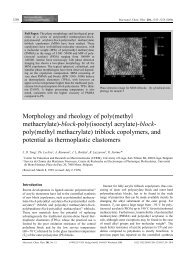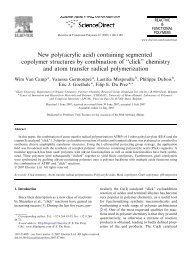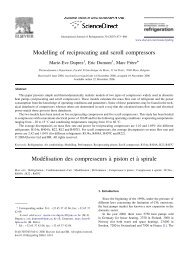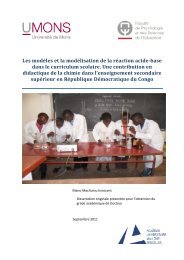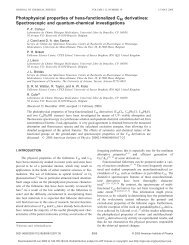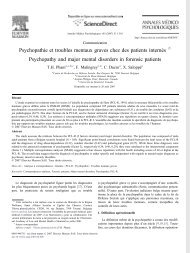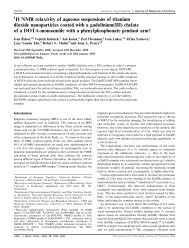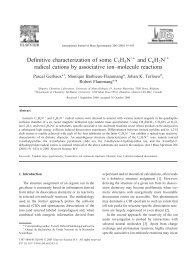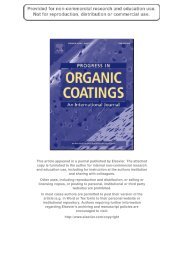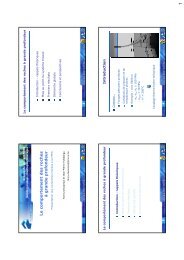Les modèles et la modélisation de la réaction acide-base dans le ...
Les modèles et la modélisation de la réaction acide-base dans le ...
Les modèles et la modélisation de la réaction acide-base dans le ...
You also want an ePaper? Increase the reach of your titles
YUMPU automatically turns print PDFs into web optimized ePapers that Google loves.
2. M<strong>et</strong>hods, results and discussion<br />
2.1. Research sampling and data col<strong>le</strong>ction m<strong>et</strong>hods<br />
The investigation was carried out at the end of the 2006-2007 school year with 240<br />
Congo<strong>le</strong>se second-year chemistry stu<strong>de</strong>nts from ten secondary scientific schools of<br />
DRC Bukavu region. We used a paper and pencil test. All the stu<strong>de</strong>nts were given the<br />
same test (see Tab<strong>le</strong> 1). We wanted to <strong>le</strong>arn more about wh<strong>et</strong>her stu<strong>de</strong>nts correctly<br />
i<strong>de</strong>ntify chemical and physical processes in or<strong>de</strong>r to comprehend chemical reaction<br />
(CR) by giving a vari<strong>et</strong>y of slightly different interpr<strong>et</strong>ations and come to un<strong>de</strong>rstand<br />
different phenomena in or<strong>de</strong>r to hand<strong>le</strong> CR. The null hypothesis was they could<br />
distinguish the PP or CP and easily i<strong>de</strong>ntify the CR using scientific criteria as atten<strong>de</strong>d<br />
by the chemistry curriculum. Thus they would be ab<strong>le</strong> to transfer –as an important<br />
objective of the chemistry curriculum- their c<strong>la</strong>ss know<strong>le</strong>dge to everyday life<br />
situations.<br />
Number<br />
Question<br />
1 Establish the difference b<strong>et</strong>ween chemical phenomena and physical phenomena<br />
2 Define chemical reaction in your own terms and give two examp<strong>le</strong>s<br />
3 Distinguish physical from chemical phenomena. Exp<strong>la</strong>in your answer and state in<br />
which a chemical reaction occurs (see the list of nine phenomena <strong>le</strong>arnt in c<strong>la</strong>ss)<br />
4 Cite the different categories of reaction you know (<strong>le</strong>arning c<strong>la</strong>ss)<br />
5 Give 20 natural phenomena (everyday experiences), say which can be qualified as<br />
chemical phenomena. Specify in which case a chemical reaction occurs (do not cite<br />
any examp<strong>le</strong> simi<strong>la</strong>r to question 3 examp<strong>le</strong>s).<br />
Tab<strong>le</strong>1. Questionnaire tested<br />
[NB: there follows a list of nine assumptions concerning: (a)burning paper (b)sawing<br />
wood (c)rusting (d)ripping up clothes (e) varnishing nails (f) shaving (g) cooking food<br />
(h)producing beer (i)synthesis of an indicator]. These are the main examp<strong>le</strong>s taught<br />
at school and might have some applications in the nature.<br />
Our test was composed of five questions: the first question Q1 to fourth question Q4<br />
for school know<strong>le</strong>dge and the fifth question Q5 for everyday life situations. We<br />
wanted pupils to establish the difference b<strong>et</strong>ween PP and CP (Q1), to <strong>de</strong>fine the<br />
16



